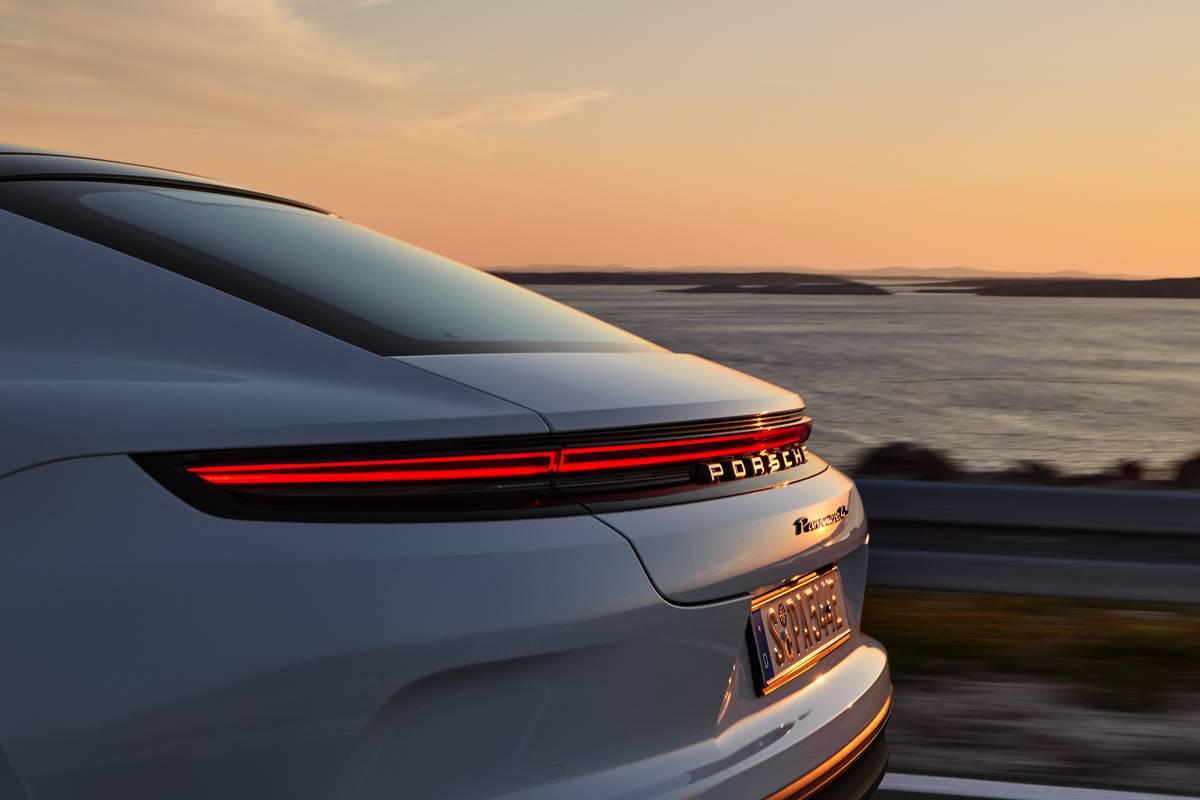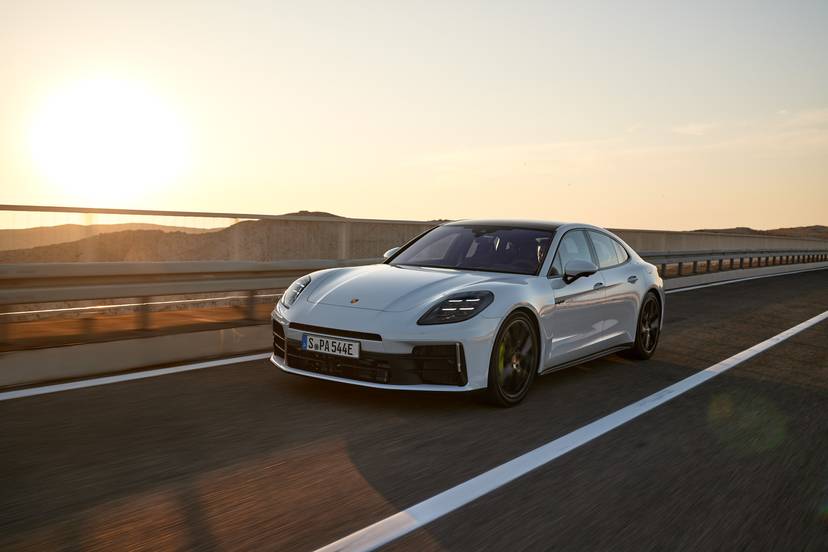
Porsche debuted the next generation of its Panamera luxury sedan in November, showing off the extremes of a diverse powertrain lineup. Now, the company is filling in the chasm between the 348-horsepower base version and the 670-hp, twin-turbo V-8 hybrid with a pair of tamer plug-in hybrid variants for the 2025 model year: the Panamera 4 E-Hybrid and 4S E-Hybrid.
Related: 2024 Porsche Panamera: 4 Things We’re Excited For
Different Paths, Similar Results
Both the 4 and 4S hybrids pair a twin-turbo 2.9-liter V-6 engine with an electric motor nestled into the housing of an eight-speed dual-clutch automatic transmission, as they did in the previous Panamera generation. But with this pair, the numbers do not tell the full story. The Panamera 4 E-Hybrid makes 463 hp and 479 pounds-feet of torque, up 8 hp but down 37 pounds-feet compared to its predecessor. The 4S E-Hybrid’s 536 hp represents a loss of 16 hp, but its torque output stays the same at 553 pounds-feet.
Within those figures, though, the balance of power has shifted. The Panamera hybrids’ electric motor is new and more powerful than before. Its 187 hp and 331 pounds-feet are increases of 53 hp and 36 pounds-feet, respectively, over the motor in the outgoing cars. That allowed Porsche to significantly revise the gas-burning part of the powertrain equation and still net similar output. Fuel-economy estimates are not available yet, but we expect meaningful improvement from both Panamera hybrids’ 2023 EPA rating of 22 mpg combined.
Juiced Up
The Panamera hybrids’ new battery pack boasts a nearly 50% increase in storage capacity (up from 17.9 to 25.9 kilowatt-hours), yet it fits into the same space as the pack in the outgoing cars. For the previously announced Panamera Turbo E-Hybrid, Porsche claimed the larger battery pack and more efficient motor increase electric range by 70%. Presuming the lower-powered 4 and 4S E-Hybrids enjoy a similar increase, all-electric range is likely to land near or above 30 miles. Porsche also says the new 11-kilowatt onboard charger can completely rejuvenate the battery in as little as 2.5 hours.
With the Panamera 4 and 4S not only being hybrids, but Porsche hybrids, performance matters just as much as efficiency. Porsche claims the Panamera 4 E-Hybrid will be able to accelerate from 0-60 mph in 3.9 seconds and hit a top speed of 174 mph, while the 4S E-Hybrid will hit 60 mph in 3.5 seconds and go on to a top speed of 180 mph.
Powertrain and Chassis Controls
The 2025 Panamera 4 and 4S E-Hybrids benefit from advanced battery management programming that can incorporate navigation information to do things like preserve battery charge for an upcoming urban destination. In Sport and Sport Plus drive modes, the drivetrain controls maintain enough charge (20% and 30%, respectively) to aid in performance without excess power being diverted to unnecessarily charge the battery.
Additionally, the brand fits an adaptive suspension with Porsche Active Suspension Management to the 4 and 4S E-Hybrids as standard equipment. The available Porsche Active Ride powers the dampers with a hydraulic pump that can actively compress and extend them, leaning the body of the Panamera into curves and compensating for the natural squatting motion under hard acceleration and diving associated with heavy braking.
On-Sale Date and Pricing
The redesigned 2025 Porsche Panamera 4 and 4S E-Hybrids go on sale later in the year, with orders opening by late March. Pricing for the Panamera 4 E-Hybrid starts at $117,495, while the Panamera 4S E-Hybrid starts at $128,795 (all prices include a $1,995 destination fee).
More From Cars.com:
- 2024 Porsche Panamera Revealed, Redesigned and Tech-Rich
- 2021 Porsche Panamera 4S E-Hybrid: 7 Things We Like and 3 We Don’t
- How Do Car Seats Fit in a 2018 Porsche Panamera?
- Research the Porsche Panamera
- Find Your Next Car
Related Video:
We cannot generate a video preview.
Cars.com’s Editorial department is your source for automotive news and reviews. In line with Cars.com’s long-standing ethics policy, editors and reviewers don’t accept gifts or free trips from automakers. The Editorial department is independent of Cars.com’s advertising, sales and sponsored content departments.




















